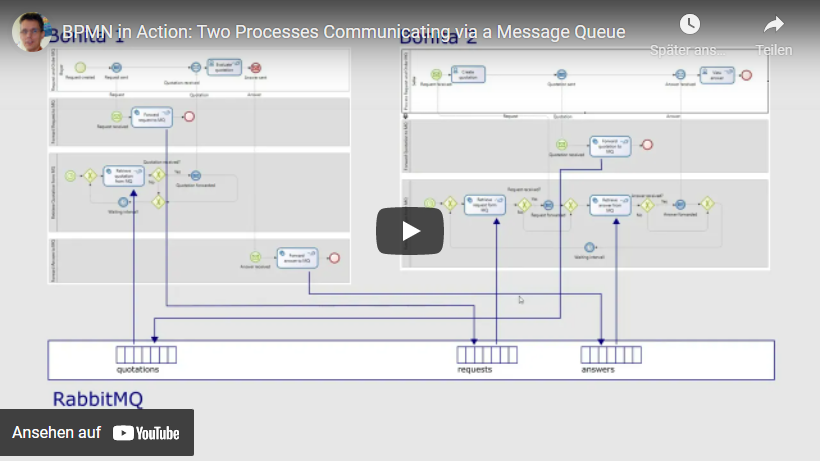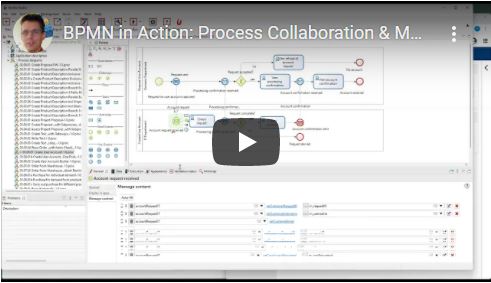In the last post I have shown how a process running on a process engine can communicate with a second process that is installed on a different process engine. For the communication, the REST interface of the second process engine was used. Since there isn’t any standard for process engines‘ REST interfaces, the calls must be adapted to the specifics of the second engine’s interface.
A more flexible approach is the use of a message queue (MQ). Such a message queue ist provided by a message broker. The involved processes communicate by inserting and removing messages from a queue. With this approach it is easier to exchange one of the process engines with a different engine. It is even possible that a process communicates with an entirely different system, such as an ERP system. For this example, a small Java class has been written that is used as a replacement for the second process.

